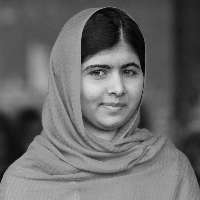
Where did the brightest minds in history come from?
The distribution of nobel prizes among different birth counties of all laureates
It is evident from the map above that the birth country of the majority of laureates is the United States. A similar trend is observed for all the Nobel categories except for Literature, for which the leading country is France. A major concentration of Nobel awards is also observed in Europe, most notably in England, Germany and Russia. In other words, a person born in either North America or Europe is more likely to win a Nobel Prize.
Where did they study?
Top Universities or Organizations Producing Nobel Prize Laureates
The top five schools that have produced laureates across all Nobel prize categories are primarily located in the United States. However, there are also notable universities in the United Kingdom, Germany, France, and Switzerland known for nurturing Nobel prize winners. Statistically speaking, your chances of winning a Nobel prize may be smaller if you did not attend courses at one of these prestigious universities.
How competitive is it though?
Decades of Increased Competition: The Changing Landscape of Nobel Prize Acceptance Rates across Categories
By examining the aforementioned chart, we can notice the significant decrease in acceptance rates across these three Nobel categories. The declining acceptance rates demonstrate the growing significance of originality, impact, and exceptional scientific achievements needed to stand out amidst the ever-expanding sea of publications. For the aspiring Nobel laureates, this means just much more work and effort.
At what age did they win the Nobel?
Age distribution of Nobel laureates across different age groups, segmented by the award categories
The majority of Nobel laureates are conferred their awards between the ages of 50 and 65, with only a small number of individuals aged 15 to 30 receiving this prestigious honor. It's important to highlight that there is a waiting period involved before one is awarded a Nobel Prize; it is not given immediately after a breakthrough.
Who are the youngest and the eldest laureates?

Malala Yousafzai
Nobel Peace Prize - Age 17
She became the world's youngest Nobel Prize laureate in 2014. Yousafzai is a human rights advocate for the education of women and children in her native homeland, Swat, where the Pakistani Taliban had at times banned girls from attending school.
Leonid Hurwicz
Nobel Prize in Economics - Age 90
In October 2007, Hurwicz shared the Nobel Memorial Prize in Economic Sciences with Eric Maskin of the Institute for Advanced Study and Roger Myerson of the University of Chicago "for having laid the foundations of mechanism design theory.
What about the gender?
How many women and men have won a Nobel Prize
The charts depicted above reveals the proportion of male and female Nobel Prize winners and their distribution over the years. While the early era had fewer female laureates, there has been a notable increase in recent times. However, it is important to note that women, especially in the natural science disciplines, still face greater challenges in winning Nobel Prizes. This gender disparity underscores that being a woman with outstanding contributions may not yield you nesseserily a Nobel award.
How many years did they wait?
Unveiling the Time Gap Between Nobel Prize and Publication Year
Within the fields of chemistry, medicine, and physics, there is a noticeable trend of the time lag between Nobel Prize year and publication year progressively expanding over time. This trend suggests that scientific discoveries within these disciplines are becoming increasingly intricate and demanding, necessitating prolonged periods of study and validation before they yield the esteemed Nobel recognition. The chart above vividly depicts this widening time gap, underscoring the complexity inherent in contemporary scientific research. All that, clearly underline that the early days of Nobel Awards were much more friendly to aspiring researchers for winning the prestigious prize.
Department of Informatics and Telecommunications
National and Kapodistrian University of Athens